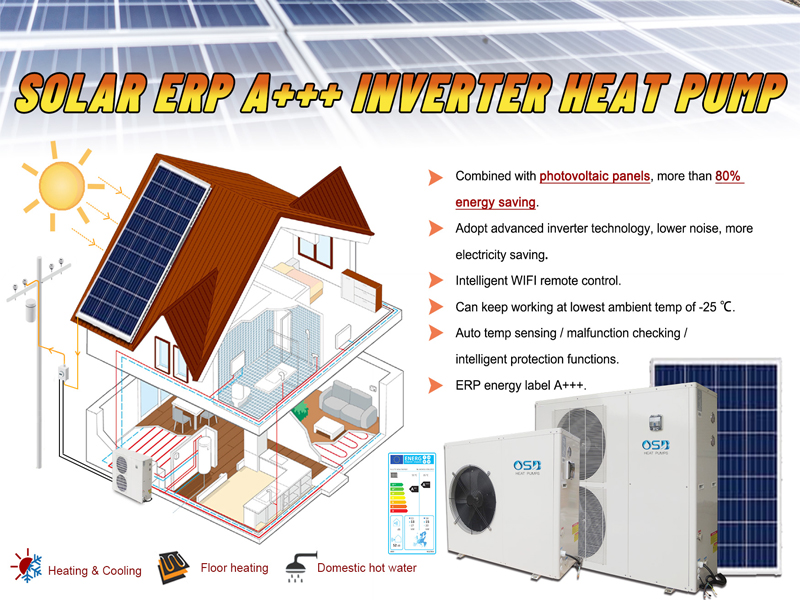Comparison
Generally speaking the use of this integrated system is an efficient way to employ the heat produced by the thermal panels in winter period, something that normally wouldn’t be exploited because its temperature is too low.
Separated production systems
In comparison with only heat pump utilization, it is possible to reduce the amount of electrical energy consumed by the machine during the weather evolution from winter season to the spring, and then finally only use thermal solar panels to produce all the heat demand required (only in case of indirect-expansion machine), thus saving on variable costs.
In comparison with a system with only thermal panels, it is possible to provide a greater part of the required winter heating using a non-fossil energy source.
Traditional heat pumps
Compared to geothermal heat pumps, the main advantage is that the installation of a piping field in the soil is not required, which results in a lower cost of investment (drilling accounts for about 50% of the cost of a geothermal heat pump system) and in more flexibility of machine installation, even in areas in which there is limited available space. Furthermore, there are no risks related to possible thermal soil impoverishment.
Similarly to air source heat pumps, solar-assisted heat pump performance is affected by atmospheric conditions, although this effect is less significant. Solar-assisted heat pump performance is generally affected by varying solar radiation intensity rather than air temperature oscillation. This produces a greater SCOP (Seasonal COP). Additionally, evaporation temperature of the working fluid is higher than in air source heat pumps, so in general the coefficient of performance is significantly higher.
Low temperature conditions
In general, a heat pump can evaporate at temperatures below the ambient temperature. In a solar-assisted heat pump this generates a temperature distribution of the thermal panels below that temperature. In this condition thermal losses of the panels towards the environment become additional available energy to the heat pump.In this case it is possible that the thermal efficiency of solar panels is more than 100%.
Another free-contribution in these conditions of low temperature is related to the possibility of condensation of water vapor on the surface of the panels, which provides additional heat to the heat transfer fluid (normally it is a small part of the total heat collected by solar panels), that is equal to the latent heat of condensation.
Heat pump with double cold sources
The simple configuration of solar-assisted heat pump as only solar panels as heat source for the evaporator. It can also exist a configuration with an additional heat source. The goal is to have further advantages in energy saving but, on the other hand, the management and optimization of the system become more complex.
The geothermal-solar configuration allows reducing the size of the piping field (and reduce the investment) and to have a regeneration of the ground during summer through the heat collected from the thermal panels.
The air-solar structure allows an acceptable heat input also during cloudy days, maintaining the compactness of the system and the easiness to install it.
Challenges
As in regular air conditioners, one of the issues is to keep the evaporation temperature high, especially when the sunlight has low power and the ambient airflow is low.
Remark:
Some of the articles are taken from the Internet. If there is any infringement, please contact us to delete it. If you’re interesting in heat pump products,please feel free to contact OSB heat pump company,we are your best choice.
Post time: Sep-28-2022


